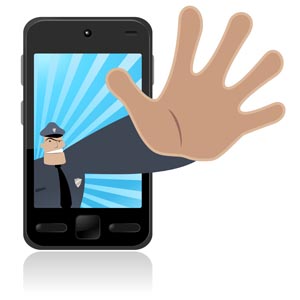 When tragedy strikes, social media can strongly influence emergency response. Tragedy struck Virginia Tech again on December 8th when a gunman shot and killed university police officer Deriek Crouse. Since then, my mind has been racing about the role social media played in the response.
When tragedy strikes, social media can strongly influence emergency response. Tragedy struck Virginia Tech again on December 8th when a gunman shot and killed university police officer Deriek Crouse. Since then, my mind has been racing about the role social media played in the response.
As a former assistant city manager and public safety official (EMS director, emergency manager, PSAP director), I am always intrigued by the response to dynamic and evolving incidents such as this one. I’ll start off by saying that I was very impressed by the actions taken by both university and law enforcement officials. A few aspects of the response are of particular interest to me.
Emergency Alerting: Reports indicate that the university’s communication response was well coordinated and executed. The initial (and subsequent) notifications were sent through multiple channels, including SMS text, e-mail, social media outlets, the school’s siren system, and posts to www.vt.edu. University administrators had empowered the police department to issue an alert without first obtaining approval. This no doubt saved considerable time.
Social Media (SM) As An Information Source: After I first learned of this latest shooting at VT through Twitter, I became curious as to the volume and type of information that was being posted to the various SM outlets. I started searching for posts with a #virginiatech hashtag on Tweetdeck and was amazed, although not surprised, by the sheer volume and velocity of traffic. I also logged into my Facebook account which, at least among my circle of friends, had no mention of the shooting. I’d be remiss if I didn’t mention the tremendous job that VT’s independent school paper @CollegiateTimes did with keeping the community (and the world) updated through Twitter. If I’m not mistaken their number of followers was somewhere around 5,000 at the start of the incident and bumping up against 20,000 a few hours later. SM clearly ruled the day from a public information perspective. But what, if anything, was done by public safety with the information being generated by the public?
Responding to Social Media (SM): I switched back to Twitter / Tweetdeck and put myself in the shoes of law enforcement or the incident commander who might be coordinating the response to the incident and search for the suspect(s). What intelligence or situational awareness would I have gleaned from Twitter, YouTube, Flickr, Facebook or other sites? Would this have proven to be a distraction or invaluable? Could I have afforded to ignore SM posts and simply rely upon intel gleaned in the field by officers conducting the search or tips received through traditional communications methods?
My thoughts are as follows… given the prevalence of SM use today, I would have felt obligated to attempt to monitor the posts related to the campus. What if a valuable tip or a cry for help were transmitted only through Twitter? What if someone posted a photo or video that would have provided my officers with enhanced situational awareness? The reality is that there was so much traffic associated with #virginiatech that I was completely unable to read, let alone, process all of the posts to determine which might be of value. I would have been screaming for a technological solution to assist me with finding the needle in the SM haystack.
This may have indeed taken place, but if I were on the incident command team and plugged into SM, I would have broadcast a unique hashtag related to the incident for tips. This might have helped me reduce the amount of background noise from individuals who were simply posting well wishes, thoughts, prayers, or expressions of their shock to the incident. Perhaps #VTtips might have done the trick…I’m not sure.
Operational Security and the Web: One other aspect that has always concerned me about how plugged in the world is to unfolding events is the potential threat that real time posts poses to law enforcement operational security. I cringed each time I read a Tweet that reported on officer or tactical team locations based on radio transmissions heard over online police scanners. At one point @CollegiateTimes posted a photo of a tactical team making entry into one of the buildings on campus. I was relieved when a follow-up post clarified that the picture had been taken much earlier in the day (reports now suggest it was from 2007), but it made me wonder about the implications to police had it been more “real-time.” Was information being distributed through “informal” social media sources changing student behaviors or the behavior of the suspect? Were those behavior changes helpful or harmful?
The events at Virginia Tech were certainly tragic, but they also demonstrated in an extremely evident manner the use of SM as events unfold, as well as the associated challenges and opportunities presented to public safety. For those of you in law enforcement, emergency management, and crisis communications, I’d love to hear your thoughts.
Flickr photo by “Naughty Architect”, James Lumb

Noah Reiter
Noah Reiter, MPA is the Director of Industry Solutions for Rave Mobile Safety, a leading provider of software safety solutions. Noah’s has extensive experience in city management and emergency services. Prior to joining Rave, he served as Assistant City Manager for the City of Sandy Springs, GA, where he spearheaded the successful evaluation, design, and implementation of a new multijurisdictional 9-1-1 communications center. He also led the redesign of what became a highly effective performance-based contract for the provision of EMS for the City and was involved in numerous other public safety and information technology initiatives. Prior to his work with Sandy Springs, Noah spent more than 15 years in the EMS profession as a paramedic and an administrator, including serving as the EMS Director for Grady Health System, the City of Atlanta’s EMS provider and earlier as the Director of EMS, Security, and Emergency Preparedness for Lenox Hill Hospital in New York City. His career in EMS administration began at Rice University where he co-founded its Emergency Medical Services while pursuing his undergraduate degree. Noah currently resides in Boston and can be reached at nreiter@ravemobilesafety.com and followed | @noahreiter
 I attended a conference today with some senior police leaders to discuss how we take police use of social media forwards. Following on from the riots, there is a real impetus behind this work, and the genie is now well and truly out of the bottle. It was really refreshing to see a room full of senior officers with an understanding of the key issues and a desire to improve the current situation.
I attended a conference today with some senior police leaders to discuss how we take police use of social media forwards. Following on from the riots, there is a real impetus behind this work, and the genie is now well and truly out of the bottle. It was really refreshing to see a room full of senior officers with an understanding of the key issues and a desire to improve the current situation.










